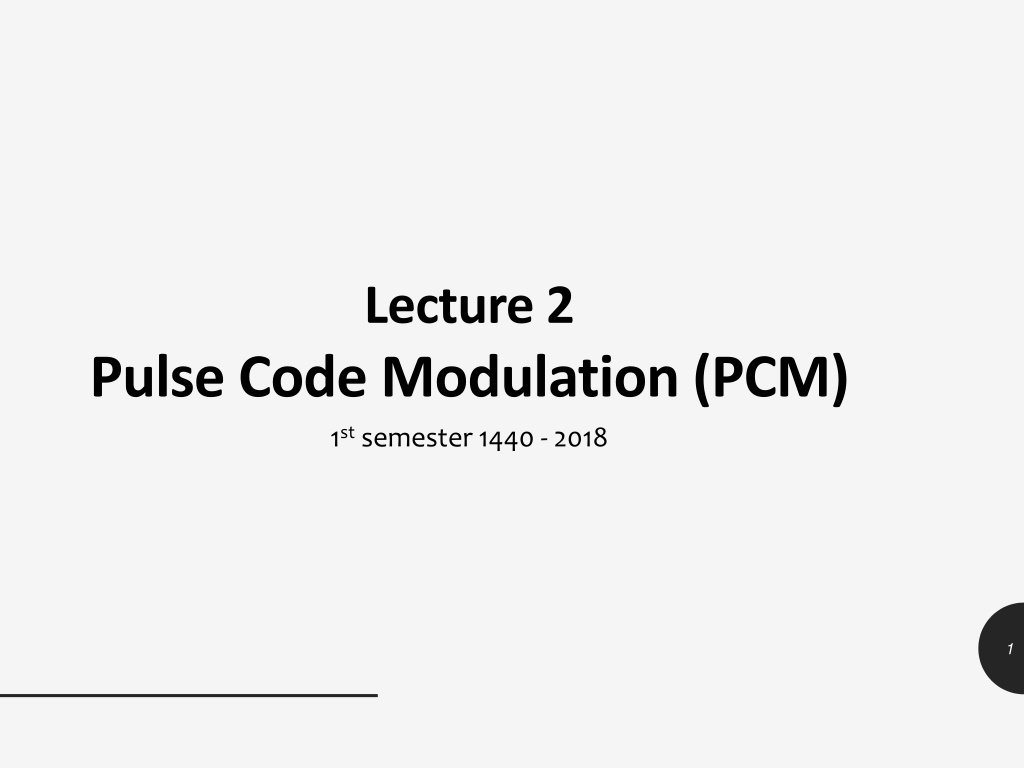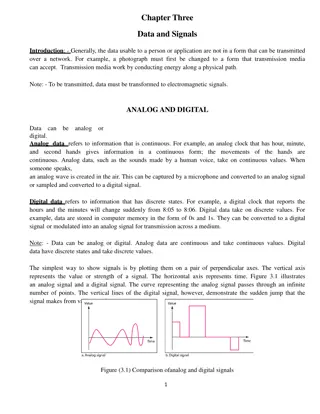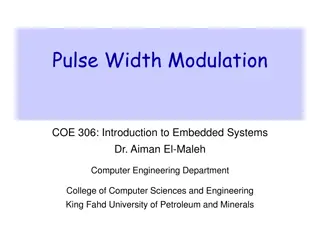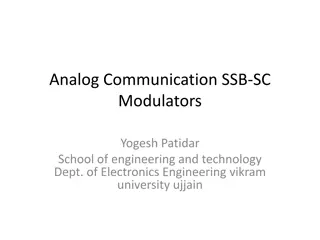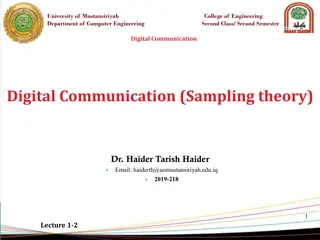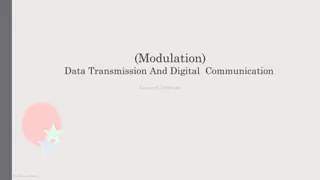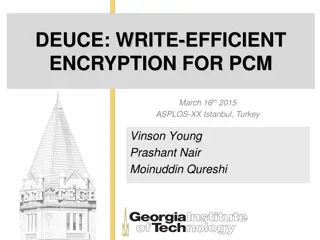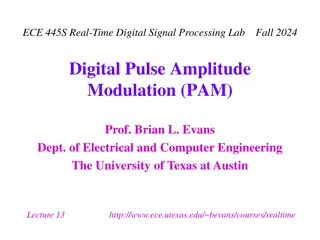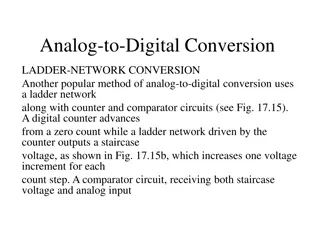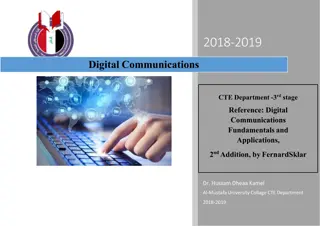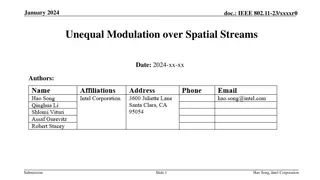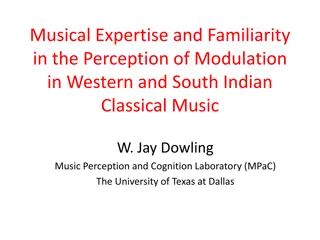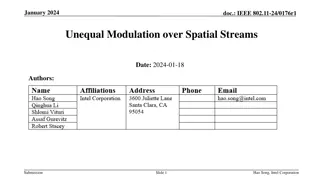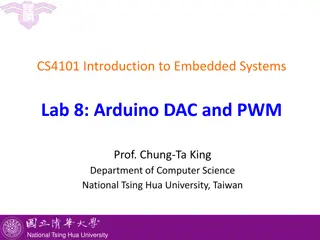Understanding Pulse Code Modulation (PCM) in Analog to Digital Conversion
This content delves into the realm of Pulse Code Modulation (PCM), outlining its significance in converting analog data to digital signals. It covers the process of Analog to Digital Conversion, emphasizing the advantages of digitizing analog signals for improved quality and reduced noise. The steps involved in PCM, such as Sampling (PAM), Quantization, Binary Encoding, and Line Encoding, are explored in detail, shedding light on the transition from analog to digital in signal processing.
Download Presentation

Please find below an Image/Link to download the presentation.
The content on the website is provided AS IS for your information and personal use only. It may not be sold, licensed, or shared on other websites without obtaining consent from the author. Download presentation by click this link. If you encounter any issues during the download, it is possible that the publisher has removed the file from their server.
E N D
Presentation Transcript
Lecture 2 Pulse Code Modulation (PCM) 1st semester 1440 - 2018 1
Outline - Analogue to Digital conversion. - Sampling (PCM). - Pulse Code Modulation Advantages. - Pulse Code Demodulation. 2
Analog to Digital Conversion - A digital signal is superior to an analog signal. - Digital is less prone to noise and distortion. - We can t use analog signals for long distance (lose their strength, which means amplifiers are needed to amplify signal. However the amplifier creates distortion in the signal and adds some noise). - The tendency today is to change an analog signal (such as audio ,voice and music) to digital data. - Pulse Code Modulation (PCM) isa technique to convert analog data to digital signal. 3
Analog to Digital Conversion The idea of digitizing analog signal started with telephone companies, to provide long distance services; They digitized the analog signal at the sender; The signal is converted back to analog at the receiver. - Pulse Code Modulation (PCM): 1- Sampling (PAM). 2- Quantization. 3- Binary encoding. 4- Line or block coding. 4
1. Sampling(PAM) The first step in PCM is sampling. The analog signal is sampled at equal interval, every Ts s (sample interval) The inverse of sampling interval is sampling rate or sampling frequency. fs= 1/Ts Samplingrate: number of samples per second.
2. Quantized PAM Signal The result of PAM is a series of pulses with amplitude values between the maximum and minimum amplitudes of the signal with real values. Quantization: is a method of assigning integer values in a specific range to sampled instances. 7
3. Binary Encoding - Each quantized samples is translated into equivalent binary codes . 8
4. Line Encoding - The binary digits are then transformed to a digital signal using one of the line encoding. 9
PCM Block The basic elements of a PCM system
Pulse Code Modulation Advantages 1. Analog signal can be transmitted over a high speed digital communication system. 2. Probability of occurring error will reduce by the use of appropriate coding methods. 3. PCM is used in Telkom system, digital audio recording, digitized video special effects, digital video, voice mail. 4. PCM is also used in Radio control units as transmitter and also receiver for remote controlled cars, boats, planes. 5. The PCM signal is more resistant to interference than normal signal.
Pulse Code Demodulation Pulse Code Demodulation: will be doing the same modulation process in reverse. Demodulation starts with decoding process During transmission the PCM signal will effected by the noise interference.
